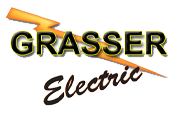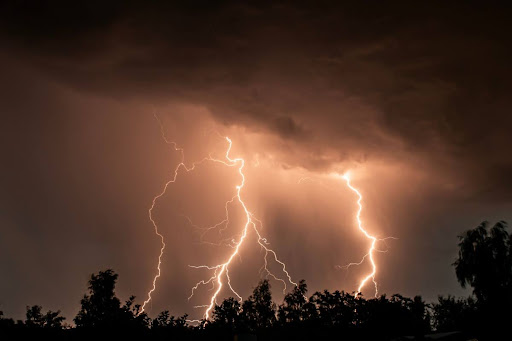Lightning strikes can turn your peaceful home into a danger zone in seconds. Each year, thousands of homes get hit, causing fires, damaging electrical systems, and putting families at risk.
Here in St. Louis and throughout St. Charles County, our summer thunderstorms bring spectacular light shows, but they also bring serious electrical hazards straight to your doorstep. You can take practical steps to guard your home and loved ones against these powerful electrical forces.
How Lightning Actually Damages Your Home
Lightning packs an incredible punch — we’re talking about 300 million volts and 30,000 amps in a typical strike. That’s way more than your home’s electrical system can handle!
When lightning hits:
- Your electrical wiring might melt or catch fire.
- Electronics and appliances can get fried instantly.
- Plumbing systems can become electrically charged.
- Structural damage can occur at entry and exit points.
- Smoke damage may spread throughout your home.
Lightning doesn’t even need to hit your house directly to cause problems. A strike to a nearby tree or power line can send a surge through underground pipes or wiring and still damage your property. Lightning can travel through water pipes, phone lines, and even the ground before reaching your electrical system.
Top Lightning Protection Systems Worth Your Investment
Adding proper protection equipment gives you significant peace of mind during storm season. These systems don’t stop lightning, but instead, they give it a safe path to the ground instead of through your valuable electronics and wiring.
Lightning Rods
Lightning rods remain one of the most effective forms of protection. These simple devices create a preferred path for lightning to follow, directing its massive electrical charge safely into the ground instead of through your home’s structure.
A complete system includes:
- Strike termination devices (the actual rods)
- Heavy-duty conductors to carry the current
- Proper grounding equipment
- Surge protection components
Installation requires professional knowledge since improper setup can actually increase your risk rather than reduce it.
Whole-House Surge Protection
Even with lightning rods, power surges can enter through utility lines. A whole-house surge protector installed at your main electrical panel acts as a bouncer, blocking excessive voltage from entering your home’s wiring system.
These devices:
- Monitor incoming electrical current
- Detect abnormal spikes in voltage
- Divert excess electricity to the ground
- Protect all circuits in your home simultaneously
Remember that small plug-in surge strips help, but they can’t match the protection of a professionally installed whole-house system.
Weather Warning Systems That Could Save Your Life
Advanced warning gives you precious time to prepare when a storm approaches. Smart home systems now integrate with weather services to provide alerts before severe storms arrive and automatically cut power to sensitive equipment. They can even send notifications to your phone when you’re away and track lightning strikes in real time around your property.
What To Do When Lightning Strikes
If lightning does hit your home, knowing how to respond can prevent injuries and limit damage.
Immediate Safety Actions
First, check for fire. Lightning strikes often ignite materials in attics or inside walls, where the fire can spread unnoticed at first. Look for:
- Smoke or burning smells
- Discolored or hot walls
- Circuit breakers that won’t reset
- Sparking outlets
Electrical System Assessment
After confirming there’s no fire risk:
- Stay away from plumbing fixtures, as water can conduct electricity
- Avoid using landline phones
- Check appliances for signs of damage
- Document everything for insurance purposes
Even if everything seems fine, call a licensed electrician for a thorough inspection. Hidden damage to your electrical system could cause problems later or create fire hazards.
Preventing Lightning Damage Through Smart Landscaping
Your yard design actually plays a role in lightning safety. Tall trees near your home can act as lightning rods themselves, and if they’re too close, they might direct that energy toward your house. Smart landscaping practices include keeping tall trees at least 10 feet from your home, avoiding single, isolated trees in open areas, and using low-growing plants near the house.
Some homeowners also focus on creating drainage that directs water away from your foundation.
Lightning Myths That Put You At Risk
Misinformation about lightning safety abounds. Let’s clear up some dangerous myths:
Myth: Lightning Never Strikes Twice
Lightning absolutely can and does strike the same place multiple times. The Empire State Building gets hit about 25 times each year! If your home has been struck once, that might indicate it’s in a vulnerable location.
Myth: Rubber Tires Protect You in a Car
It’s not actually the rubber tires that make cars relatively safe during storms, but it’s the metal cage effect of the vehicle that directs electricity around you rather than through you!
Myth: Electronics Are Safe If Unplugged
Unplugging helps, but lightning can still affect electronics through induced current, basically creating an electrical field that damages components without direct contact. That’s why comprehensive protection systems matter so much.
Professional Lightning Remediation
DIY approaches have limits when it comes to electrical safety. Professional lightning remediation involves:
- Complete home electrical inspections
- Testing for hidden damage to wiring
- Assessing grounding systems
- Installing code-compliant protection equipment
- Documenting work for insurance purposes
After a strike, seemingly minor issues like flickering lights or breakers that trip frequently might signal serious underlying problems. These symptoms deserve professional attention before they develop into safety hazards or fire risks.
Serving Your Safety Needs!
Grasser Electric is located in St. Peters, and we proudly serve the Greater St. Louis area, protecting homeowners with our amazing electrical safety solutions. Our team responds quickly during storm season to provide emergency electrical repairs and so much more. Upgrade your electrical systems today and put lightning safety in your mind for the next big storm.

